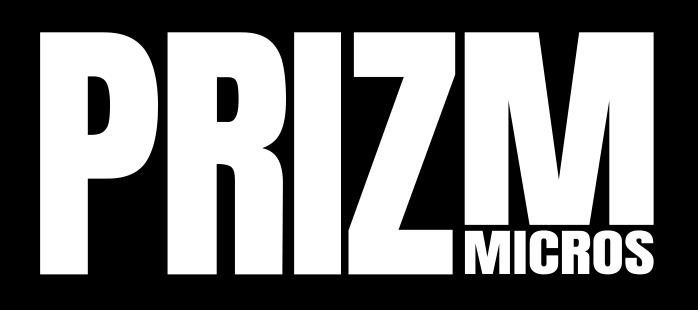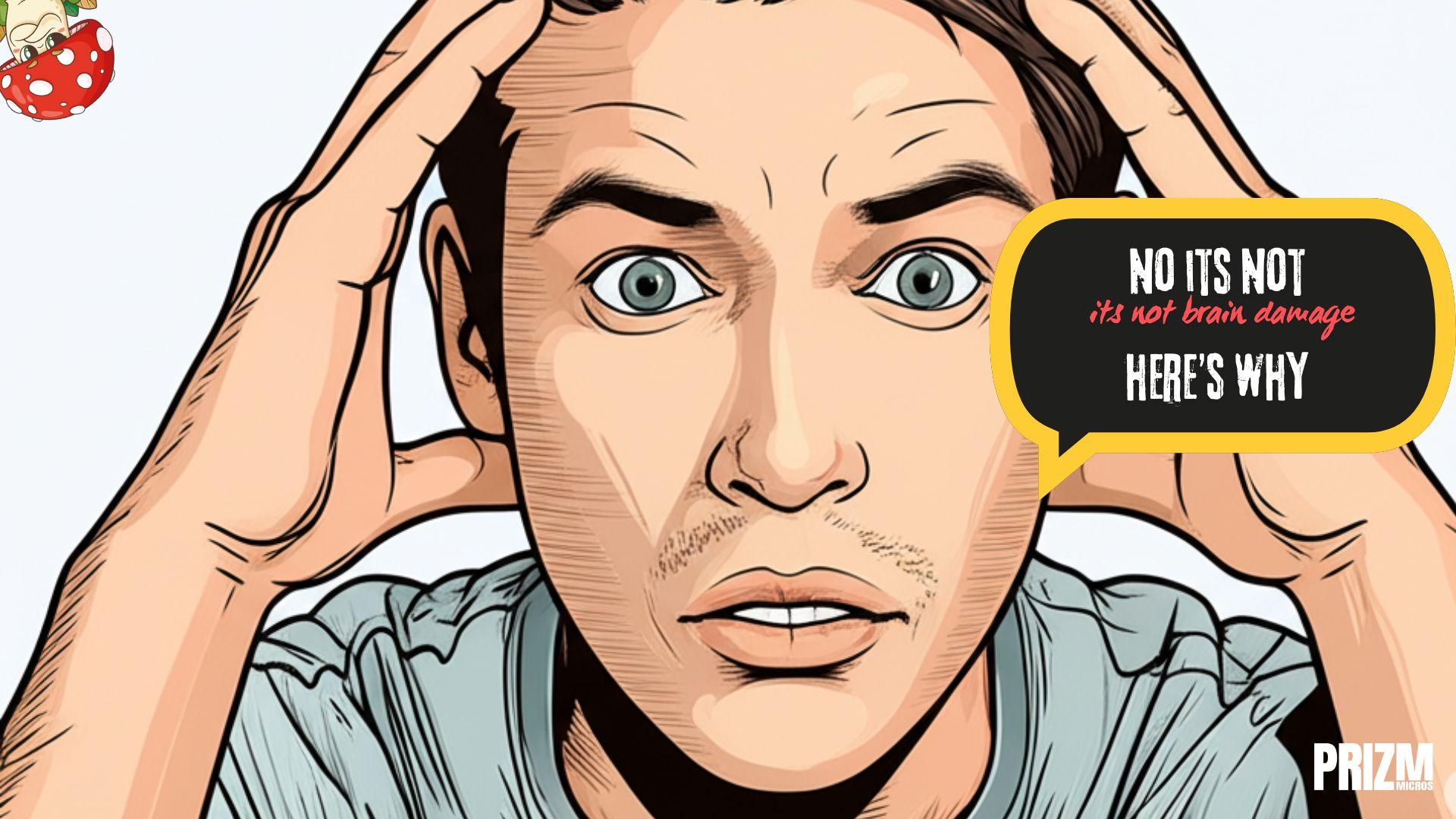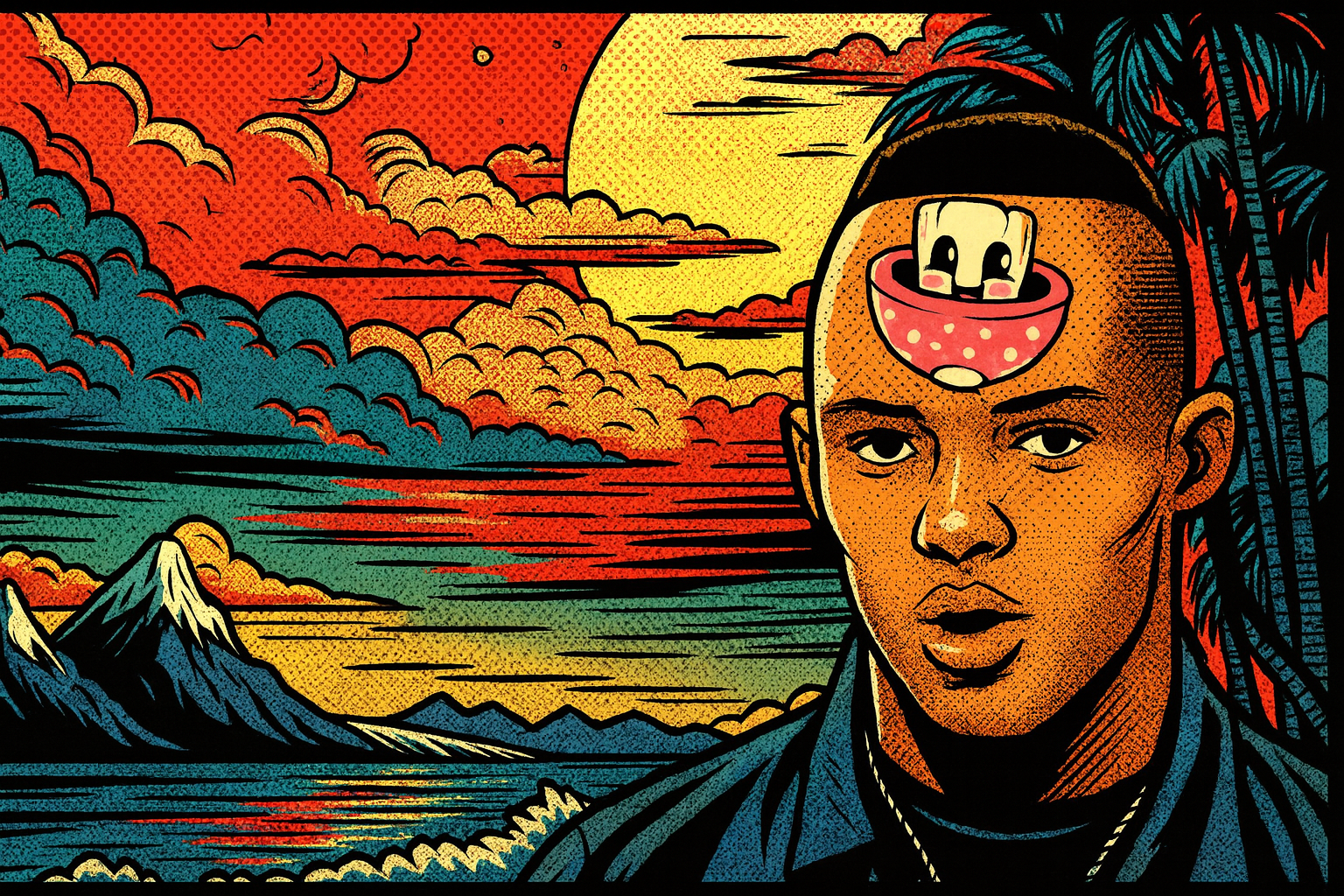Headaches after shrooms are common, usually starting 4–8 hours post-trip and fading within 24–48 hours. They’re often caused by dehydration, serotonin dips, or tension, not brain damage. Stay hydrated, rest, and seek help if symptoms are severe or persist beyond 72 hours.
Post-Trip Headache? What It Could Mean (And How to Feel Better)
So you took shrooms, the trip’s over, and now your head’s pounding like a forgotten drum circle. You’re not alone, and no, it doesn’t mean your brain is broken.
Some users report headaches following intense psychedelic experiences, even in clinical settings. They’re usually delayed, not hitting until 4–7 hours after your dose, and most fade within 24 hours. But for some users, especially those prone to migraines or sensitive to overstimulation, that next-day fog or behind-the-eyes pressure can feel intense.
Let’s break it down: what’s causing your headache, how to make it go away, and when it might actually be a red flag.
Why Do Shrooms Give You a Headache?
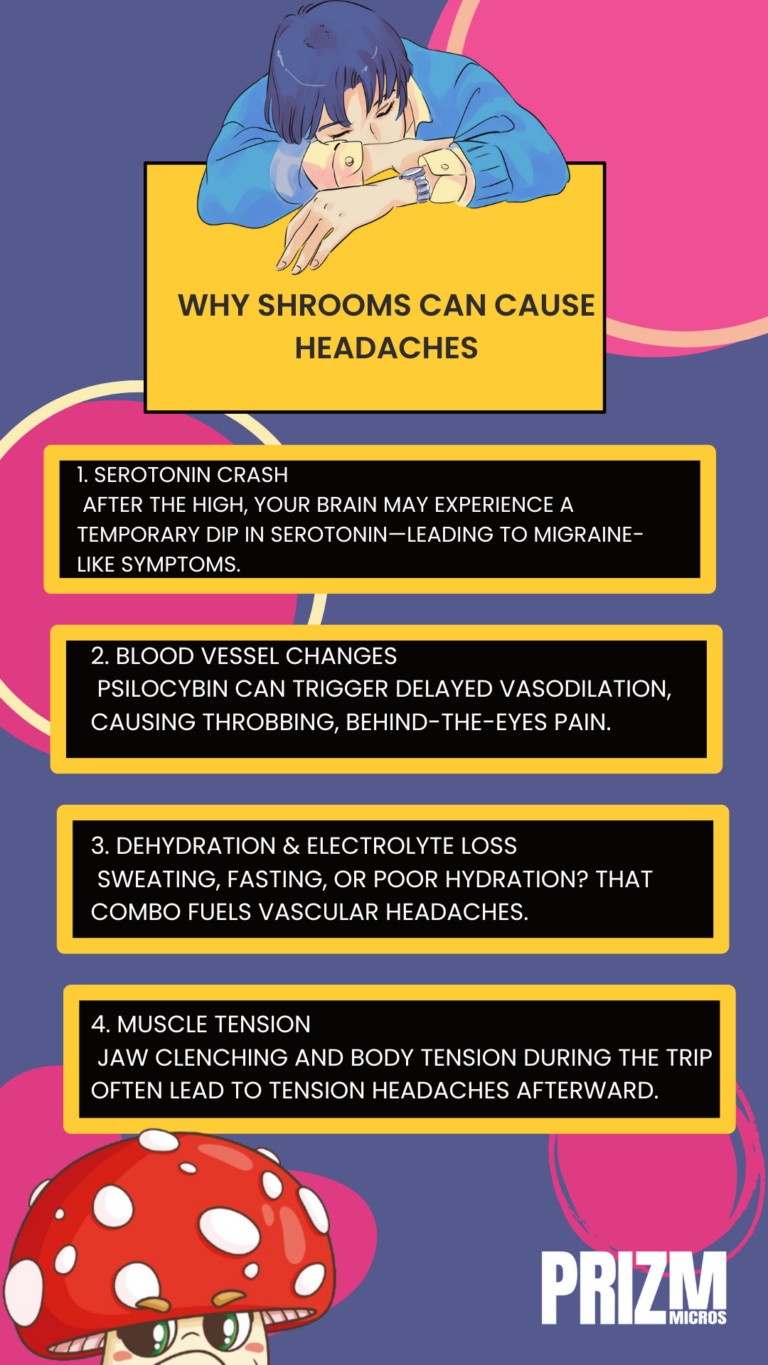
Not every trip ends with a headache, but when it does, it usually ties back to one or more of these core factors:
1. Serotonin System Disruption
Psilocybin interacts with your serotonin receptors, especially 5-HT2A, to trigger that altered state of consciousness. But afterward? Your system may experience a brief serotonin crash, similar to the comedown from MDMA. That neurochemical dip can trigger migraine-like symptoms in sensitive users.
2. Nitric Oxide and Blood Vessel Dilation
Researchers believe nitric oxide (NO) release might be the main culprit. Psilocybin appears to cause delayed vasodilation, widening blood vessels in the brain, which is a classic migraine trigger. This might explain the throbbing, behind-the-eyes pressure many users describe.
3. Dehydration and Electrolyte Loss
Whether you fasted before dosing or danced through a sweaty outdoor trip, dehydration sneaks up fast. Add in electrolyte imbalance, and you’ve got a perfect storm for a vascular headache.
4. Tension and Jaw Clenching
Tripping isn’t always about melting into a meadow. Many users clench their jaws, tense their shoulders, or hold awkward postures without noticing. This muscle tension can morph into a tension-type headache once the visuals fade.
5. Emotional or Cognitive Overload
Big trip. Big release. Big mental fatigue. When you process heavy emotional content, or fight the trip instead of flowing, you may feel a “cognitive hangover” the next day, complete with lingering fog and dull pain.
6. Sleep Disruption
Trips can run late. Psychedelics mess with your REM cycle. If you skimped on post-trip sleep or your circadian rhythm is off, your brain’s way of protesting may be a headache.
7. Environmental Triggers
Indoor tripping under harsh LED lights, poor ventilation, or loud spaces? Users consistently report worse post-trip headaches in these settings. Nature, fresh air, and ambient lighting seem to help.
Is a Headache After Shrooms Normal, or a Red Flag?
Let’s get this straight: most headaches after a psilocybin trip are normal, temporary, and harmless. But not all.
What’s Considered “Normal”?
If your headache:
- Starts 4–8 hours post-trip (often during the comedown)
- Feels mild to moderate
- Resolves within 24–48 hours
- Improves with rest, water, or OTC pain relief
…then you’re likely in the clear. Studies show this delayed headache pattern is common, especially at higher doses. It’s often described as dull pressure, not sharp pain, and doesn’t correlate with the intensity of your trip.
When You Should Be Concerned
Here’s when it’s time to pause and possibly seek medical advice:
- Severe, sudden-onset pain (“like a lightning bolt to the skull”)
- Vision problems, especially if they last past the trip
- Confusion, vomiting, or difficulty speaking
- Fever, neck stiffness, or extreme light sensitivity
- Headache lasting more than 72 hours without relief
These symptoms aren’t typical post-trip discomfort; they’re red flags. While psilocybin isn’t neurotoxic, it can interact unpredictably with underlying health conditions, contaminated mushrooms, or other substances in your system.
Reassurance: Brain Damage? Highly Unlikely
There’s no scientific evidence that psilocybin causes long-term brain damage or neurological disorders from typical usage. Headaches don’t mean your brain is fried; they’re a response to short-term changes in blood flow, muscle tension, or neurotransmitter balance.
How Long Do Psilocybin Headaches Last, and What Actually Helps?
Most post-shroom headaches follow a familiar arc. They’re not immediate, they don’t last forever, but they can definitely ruin your vibe if you’re unprepared.
The Typical Timeline
- Onset: 4–8 hours after ingestion (usually during or just after the comedown).
- Peak: Often felt the morning after a full-dose trip.
- Duration: Usually resolves within 24–48 hours.
- Outliers: Some users report low-grade, nagging pain for 2–3 days, especially if sleep was disrupted or hydration was poor.
What Actually Works to Relieve It?
Here’s a science-backed, experience-proven toolkit:
Hydration (with Electrolytes)
Water helps, but electrolytes (think coconut water, LMNT, or a banana + salt combo) are even better. Many headaches stem from subtle dehydration or electrolyte imbalance, especially if you were sweating during the trip.
Rest and Sleep
Shrooms can hijack your circadian rhythm. A solid nap or full night’s sleep post-trip is often the most underrated fix.
OTC Pain Relief (Ibuprofen or Acetaminophen)
Both are effective post-trip. Just don’t take them preemptively—NSAIDs can irritate your stomach or alter how the trip unfolds.
Magnesium Supplementation
A go-to for migraine prevention. Some psychonauts swear by magnesium pre-dosing to reduce vascular tension.
Breathwork or Meditation
Box breathing, alternate nostril breathing, or even slow exhales during the comedown can release jaw/neck tension and reduce pressure-style headaches.
CBD (No THC)
CBD oil (non-psychoactive) has helped some users calm overstimulated nerves and ease the tension that underlies emotional or somatic headaches.
Screen & Light Detox
Post-trip headaches are sensitive to screens, blue light, and noise. Dim the lights, unplug, and let your brain reset.
What Actually Causes Shroom Headaches?
Shroom-induced headaches aren’t random. They’re part biochemistry, part body signals, part set-and-setting. Here’s a breakdown of the most likely culprits—ranked by how often they show up in clinical studies and real-world experiences.
1. Serotonin System Disruption
Psilocybin mimics serotonin (5-HT), flooding receptors like 5-HT2A during the trip. Once it clears, your brain’s serotonin levels temporarily dip. That “serotonin hangover” can feel eerily similar to a migraine or MDMA comedown.
2. Dehydration & Electrolyte Imbalance
If you fasted before the trip, forgot to hydrate, or danced/sweated through it, you likely lost fluids and minerals. That vascular dehydration? Classic trigger for throbbing, post-trip headaches.
3. Physical Tension or Jaw Clenching
Ever come back to your body and realize your jaw was locked tight? Unconscious muscle tension during intense moments leads to tight necks, clenched jaws, and tension-style headaches the next day.
4. Emotional or Cognitive Fatigue
Trips aren’t always relaxing. Heavy processing, unresolved trauma, or resisting the experience can leave you mentally wiped. That “psychological hangover” often shows up physically, in your head.
5. Sleep Disruption & Circadian Imbalance
Shrooms often delay or destroy REM cycles. If your trip ran late or you couldn’t fall asleep afterward, next-day neurological fatigue is real. And with it, the headache.
6. Visual or Sensory Overstimulation
Intense visuals, screens, or flashing lights (especially indoors under LEDs) can strain the optic cortex. Add a sensitive brain post-trip, and that tension can carry over as pain, especially behind the eyes.
7. Genetic Sensitivity
If you’re prone to migraines, psilocybin’s effects on nitric oxide and glutamate may trigger that familiar pain, at even low doses.
Bottom line: It’s not just “all in your head”; it’s a mix of neurochemistry, body signals, and the environment you tripped in.
When to Be Concerned: Red Flags That Signal It’s More Than Just a Headache
Most shroom-related headaches are harmless and fade with hydration, sleep, and time. But there are situations where you shouldn’t tough it out. Here’s how to tell the difference.
Seek Medical Help If You Experience:
- Severe, Sudden-Onset Pain
If it feels like a thunderclap, explosive and intense, it’s not normal. Call a doctor immediately. - Headache With Visual Disturbances
Lingering halos, tunnel vision, or flashing lights after the trip may signal neurological issues, not trippy residue. - Confusion, Slurred Speech, or Vomiting
Any combo of headache + cognitive or motor symptoms (like trouble talking or keeping food down) is a red flag. - Neck Stiffness, Fever, or Light Sensitivity
Especially if you ate unverified mushrooms. These could indicate infection or contamination; get checked out. - Pain That Persists Beyond 72 Hours
Still hurting after three days? Time to talk to a medical professional. Especially if it’s not improving.
Bonus Concern: You Get Headaches Every Time You Trip
Recurring headaches aren’t necessarily dangerous, but they’re worth noticing. It could be:
- A sign of serotonin depletion or sensitivity
- A reaction to how you’re consuming (e.g., raw mushrooms vs. tea)
- Your body is telling you something’s not syncing
Don’t panic—but do pay attention.
Reminder: If you sourced mushrooms from an untrusted source, weren’t sure of the strain, or noticed mold/discoloration, mention that to your provider. Contaminants are rare, but not impossible.
Relief Strategies That Actually Work (and What to Avoid)
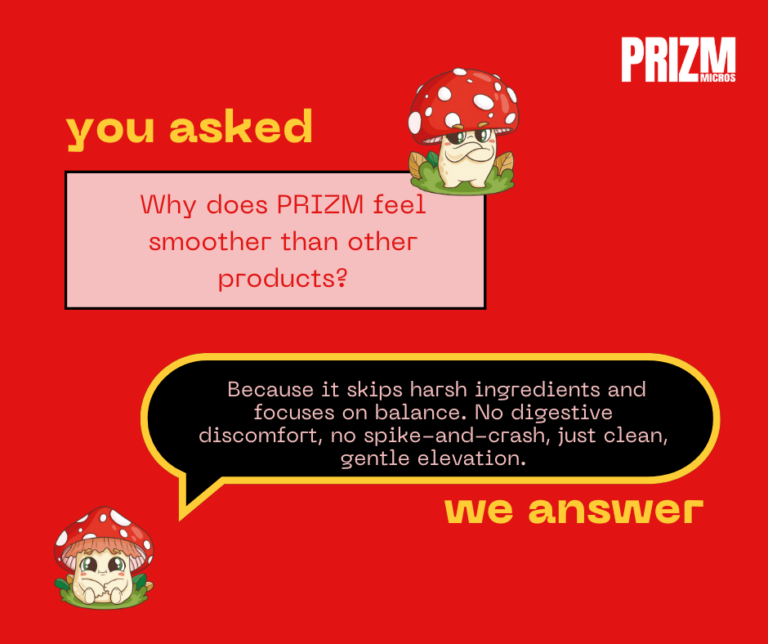
When your head is pounding post-trip, you want more than vague advice. Here’s what science and seasoned psychonauts say really helps.
1. Hydration + Electrolytes
Dehydration is sneaky. Even if you drank water, sweating, fasting, or forgetting during a long trip can dry you out.
Do this:
- Sip water steadily post-trip
- Add coconut water or electrolyte tablets for faster recovery
- Avoid diuretics like coffee or alcohol
2. Sleep Is the Real MVP
Lack of REM sleep during a trip wrecks your recovery. A solid nap or full night’s sleep resets your serotonin system and helps you bounce back.
Tip: Sleep in a dark, cool space without screens.
3. OTC Relief—But Use Wisely
Ibuprofen and acetaminophen work for many, but only after the trip. Don’t take them preemptively unless a doctor says it’s okay.
Caution: Never mix during the trip—it can change your experience.
4. Breathwork and Stretching
Box breathing or alternate nostril breathing can relax tension and reoxygenate your brain. Add neck rolls or light yoga to release muscle clenching from earlier.
5. Consider CBD (Not THC)
CBD oil or capsules help some users calm overstimulated nerves and muscle tension without the fog THC can bring.
Use it post-trip, not during peak effects.
6. Magnesium for Vascular Relief
Known to help with migraines, magnesium may ease vascular tension. Some people take it before tripping as a preventative.
7. Avoid These
- Bright screens and harsh lights: They overstimulate your visual cortex.
- Stimulants like caffeine: They worsen tension and dehydration.
- Pushing through the pain, Rest, don’t hustle your way through a neurochemical crash.
“One for flow, two for glow, three if you’re feeling bold” works for microdosing, not for ignoring a pounding head.
How Psilocybin Headaches Are Different (and Why That Matters)
Not all headaches are created equal. And if you’ve ever felt that weird, behind-the-eyes pressure after a trip, you already know, this isn’t your typical “too-much-wine” scenario.
1. Pressure Behind the Eyes (Not Around the Head)
Users describe it as orbital, almost sinus-like. It’s not a tight band like stress headaches—it’s deeper, pulsing, sometimes tied to visuals or overstimulation.
2. Delayed Reaction, Not Immediate
Unlike dehydration headaches that hit fast, psilocybin ones sneak in 4–7 hours post-dose, often peaking during the comedown or next morning. It’s a neurochemical delay, not an instant hangover.
3. Emotional Weight Meets Cognitive Fatigue
Post-trip headaches often carry a mood hangover—mental fog, emotional exhaustion, or unprocessed catharsis. That “I cried for 6 hours and now I can’t think” kind of vibe.
4. Hyper-Sensory Triggers
Screens feel brighter. Noises get sharper. Even soft lights feel like laser beams. This kind of sensory sensitivity mimics migraines more than classic tension headaches.
5. Doesn’t Always Respond to Painkillers Alone
Many find that Advil or Tylenol helps, but only when combined with hydration, rest, and reduced stimulation. Pure pharmacology isn’t always enough.
6. Heavily Influenced by Set & Setting
Trips that happen indoors, under artificial light, or in emotionally turbulent environments are more likely to lead to post-trip pain.
Translation? “Legal doesn’t mean lame”—but it does mean responsible vibes matter.
When to Worry: Red Flags That Shouldn’t Be Ignored
Most post-shroom headaches are harmless, uncomfortable blips that pass with sleep, hydration, or a bit of CBD. But not all pain is created equal, and some signals should never be shrugged off.
1. “Thunderclap” Headache (Sudden, Severe Pain)
If it feels like a lightning bolt behind your eyes—or hits harder and faster than anything you’ve ever felt—seek emergency care. Sudden-onset headaches could indicate hemorrhage or vascular issues.
2. Visual Distortions That Don’t Fade
If the trip ended but the visuals didn’t, and now your headache is paired with tunnel vision, blind spots, or pulsing lights, it’s time to see a doctor. This may point to neurological dysfunction, not just lingering visuals.
3. Headache + Vomiting or Confusion
Pain mixed with nausea, garbled speech, dizziness, or mental fog? Those are classic red flags for central nervous system stress, possibly even infection or seizure activity.
4. Fever, Neck Stiffness, Light Sensitivity
These aren’t typical trip comedown symptoms. Together, they suggest serious infections like meningitis, especially dangerous if you sourced mushrooms from unknown or wild origins.
5. Headache Lasting More Than 72 Hours
If the pain just won’t quit after three days, or worsens, that’s your cue to stop googling and start dialing. Chronic or rebound headaches need medical evaluation.
At PRIZM, we build legal mushroom products you can trust, but we also keep it real: no high is worth ignoring your health.
Final Thoughts: Know Your Brain, Know the Risks
Headaches after shrooms are more common than most people think, and thankfully, they’re usually not a cause for panic. Whether it’s from tension, dehydration, or a post-trip serotonin dip, your brain’s just adjusting back to baseline. Most of the time, a nap, hydration, and quiet space are all it takes.
But knowing when something feels “off” is key. If your pain is severe, lingering, or paired with other weird symptoms, don’t tough it out; check in with a medical pro. There’s zero shame in taking your health seriously.
For those seeking clarity, calm, and elevated mood from a trusted, legal source, PRIZM Micros offers precisely dosed, feel-good formulations that support your mindset without the guesswork.. Our products are legal, precisely dosed, and built for good vibes minus the sketchy aftermath. You get functional mushroom support, mood-boosting blends, and zero trips to the ER.
Because feeling better shouldn’t feel like gambling with your brain.
Snackable psychedelics. Built for vibes. Backed by science.
Disclaimer: This content is for informational and educational purposes only. It does not promote, encourage, or facilitate the use of any illegal or controlled substances. The information provided is not medical advice and should not be used to diagnose, treat, or prevent any condition. Always consult a qualified healthcare professional before making health decisions. PRIZM Micros products contain only legal functional ingredients and do not include psilocybin, THC, Amanita muscaria, or any controlled substances.
